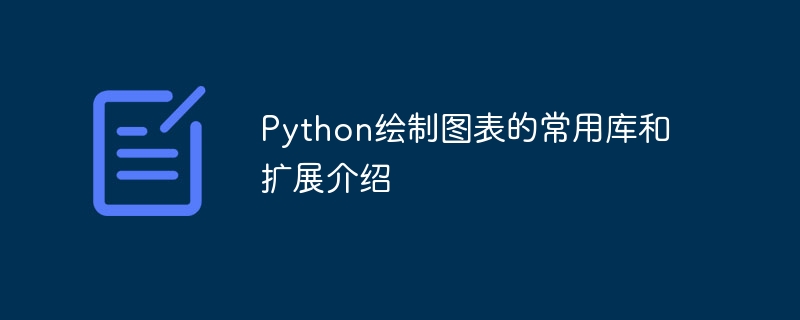

Python is a powerful and easy-to-use programming language that makes data visualization easier thanks to its rich charting library. In this article, we will introduce several commonly used Python chart drawing libraries and some of their extensions, and also provide some specific code examples.
import matplotlib.pyplot as plt
x = [1, 2, 3, 4, 5]
y = [10, 8, 6, 4, 2]
plt.plot(x, y)
plt.xlabel('x轴')
plt.ylabel('y轴')
plt.title('简单折线图')
plt.show()import seaborn as sns
tips = sns.load_dataset('tips')
sns.regplot(x='total_bill', y='tip', data=tips)
plt.xlabel('总账单')
plt.ylabel('小费')
plt.title('账单金额和小费之间的关系')
plt.show()import plotly.express as px df = px.data.tips() fig = px.bar(df, x='day', y='total_bill', color='sex', barmode='group') fig.show()
from ggplot import *
df = mpg
ggplot(aes(x='displ', y='hwy', color='class'), data=df) +
geom_point() +
xlab('发动机排量') +
ylab('高速公路里程') +
ggtitle('散点图') +
theme_bw()The above is just a brief introduction to several common Python chart drawing libraries. In fact, there are many other libraries, such as Bokeh, Altair, Pygal, etc. Depending on different needs, you can choose different libraries to draw charts.
To sum up, the Python chart drawing library provides rich functions and flexible options, allowing us to better understand and display data through visualization. By using these libraries, we can easily create various types of charts and we can also customize and adjust them according to our needs. I hope this article can help readers have a preliminary understanding of the Python chart drawing library and deepen their impression through the code examples provided.
The above is the detailed content of Introduction to common libraries and extensions for Python drawing charts. For more information, please follow other related articles on the PHP Chinese website!
 What are the common management systems?
What are the common management systems?
 mintui
mintui
 Which version of linux system is easy to use?
Which version of linux system is easy to use?
 What to do if an error occurs in the script of the current page
What to do if an error occurs in the script of the current page
 What are the requirements for Douyin live broadcast?
What are the requirements for Douyin live broadcast?
 Why can't I open pinterest?
Why can't I open pinterest?
 Introduction to Document in JS
Introduction to Document in JS
 What is the format of the account name of steam
What is the format of the account name of steam
 What are the enterprise erp systems?
What are the enterprise erp systems?




